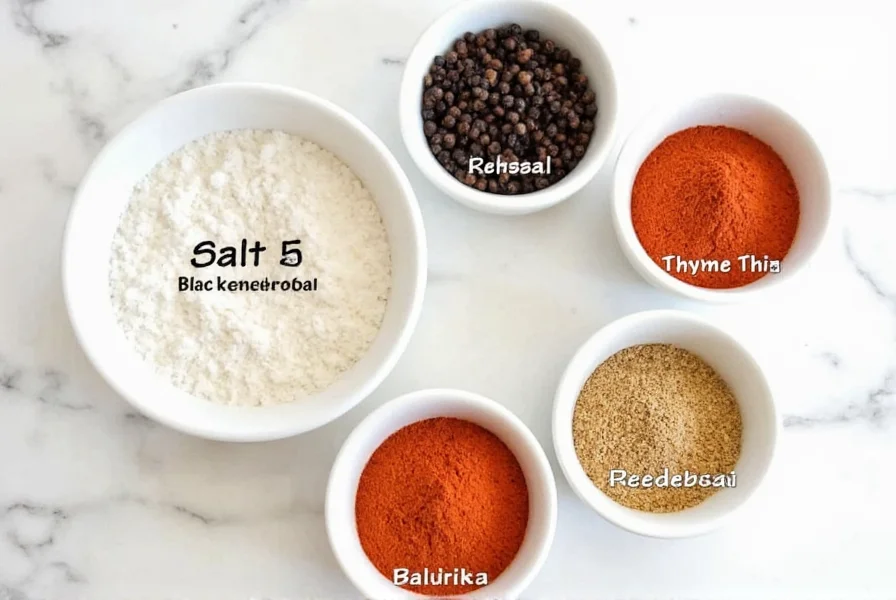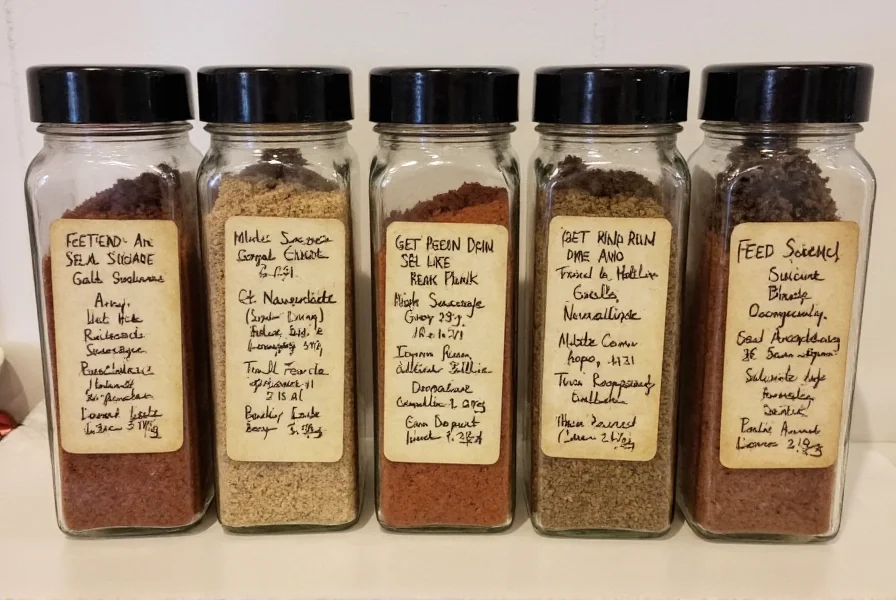Sausage seasoning transforms ordinary ground meat into flavorful, safe-to-eat products through carefully calibrated spice combinations. Understanding the science behind these blends helps both home cooks and professional butchers create consistently delicious results while maintaining proper food safety standards. The right seasoning ratio not only delivers mouthwatering flavor but also contributes to texture development and preservation—critical factors in sausage making that separate amateur attempts from professional-quality results.
Essential Components of Quality Sausage Seasoning
Every effective sausage seasoning blend contains specific elements that work together to create balanced flavor and ensure food safety. The foundation consists of:
- Salt - Typically comprising 1.5-2.5% of the meat weight, salt enhances flavor while drawing out proteins that create proper binding
- Black pepper - Provides warmth and complexity, usually coarsely ground for texture contrast
- Garlic - Fresh or powdered, this essential flavor component varies by regional tradition
- Paprika - Contributes both color and subtle sweetness, with smoked varieties adding depth
- Curing agents - For smoked or preserved sausages, sodium nitrite (Prague powder) prevents botulism
| Spice Component | Standard Ratio (per lb meat) | Primary Function |
|---|---|---|
| Salt | 1.5-2.5 tsp | Flavor enhancement, protein extraction, preservation |
| Black pepper | 0.5-1 tsp | Flavor complexity, subtle heat |
| Garlic powder | 0.25-0.5 tsp | Aromatic foundation, flavor depth |
| Paprika | 0.5-1.5 tsp | Color development, sweetness |
| Prague powder #1 | 1/4 tsp | Botulism prevention, pink color retention |
Regional Variations in Sausage Seasoning Traditions
Culinary traditions worldwide have developed distinctive sausage seasoning profiles that reflect local ingredients and cultural preferences. Understanding these regional differences helps recreate authentic flavors:
European Traditions
German bratwurst seasoning emphasizes marjoram and nutmeg with subtle caraway, creating that distinctive Northern European profile. Italian sausage blends feature fennel seed as the dominant flavor with red pepper flakes for 'hot' varieties. French saucisson sec relies on garlic, black pepper, and wine for its characteristic taste, while Spanish chorizo builds complexity through smoked paprika (pimentón) and sometimes a touch of cinnamon.

American Regional Blends
Andouille sausage from Louisiana incorporates cayenne pepper and thyme for its signature heat, while Polish kielbasa seasoning features heavy garlic with marjoram and allspice. Breakfast sausage blends balance sage with red pepper for that familiar morning flavor profile. Each regional variation maintains specific ratios that define its character—deviating significantly from these proportions creates a different product altogether.
Creating Your Own Homemade Sausage Seasoning
When making sausage seasoning from scratch, precision matters more than many home cooks realize. The difference between excellent and mediocre sausage often comes down to proper measurement and ingredient quality:
Ingredient Selection Matters
Freshness of spices dramatically impacts final flavor. Whole spices ground just before use provide superior aroma compared to pre-ground versions that have lost volatile compounds. For garlic flavor, fresh minced garlic offers brighter notes than powder, though powder provides more consistent distribution. When using curing salts, always select the appropriate type—Prague powder #1 for standard curing, #2 for long-cured products like salami.
Proper Mixing Technique
Thoroughly combine dry ingredients before adding to meat to ensure even distribution. Create a small test patty first—fry it and taste before committing your entire batch. This homemade sausage seasoning ratio guide prevents wasted ingredients and disappointing results. Remember that fat content in your meat affects flavor perception; leaner meats may require slightly more seasoning.
Common Sausage Seasoning Mistakes to Avoid
Even experienced cooks make these critical errors when working with sausage seasoning:
- Incorrect salt measurement - Too little prevents proper protein extraction; too much makes product inedible
- Overlooking temperature control - Meat should stay below 40°F (4°C) during mixing to prevent fat smearing
- Using old spices - Stale spices lack potency, leading to bland results even with proper measurements
- Skipping the test patty - Always verify seasoning balance before filling casings
- Ignoring regional authenticity - Substituting major components creates a different product than intended
Storage and Shelf Life Considerations
Properly stored sausage seasoning maintains potency for optimal results. Keep homemade blends in airtight containers away from light and heat. Most dry spice mixes remain effective for 6-12 months, though garlic and onion powders degrade faster. Curing salts have indefinite shelf life when stored properly but should be clearly labeled to prevent confusion with regular salt.

Commercial sausage seasoning typically includes anti-caking agents that extend shelf life but may contain fillers that affect flavor intensity. When comparing homemade vs store-bought sausage seasoning, consider that commercial blends often contain higher salt levels to extend shelf life—a factor to adjust for when recreating recipes.
Advanced Techniques for Perfectly Seasoned Sausage
Professional sausage makers employ several advanced techniques worth noting. Many add a small amount of corn syrup or dextrose to balance flavors and aid browning. Some incorporate wine, vinegar, or citrus juice for acidity that brightens rich meat flavors. For smoked sausages, liquid smoke used sparingly can enhance the curing process when actual smoking isn't possible.
Temperature plays a crucial role—keep meat cold during mixing (below 40°F/4°C) to prevent fat from smearing, which negatively impacts texture. The emulsion process requires proper protein extraction through thorough mixing, which depends on adequate salt content and mechanical action. Understanding these sausage seasoning scientific principles separates adequate results from exceptional ones.
Frequently Asked Questions
How much sausage seasoning should I use per pound of meat?
For standard sausage blends, use 1.5-2.5% seasoning by weight of the meat. This typically translates to 2-3 tablespoons of seasoning mix per pound of meat. Always check specific recipes as regional varieties like Italian sausage (with higher fennel content) or Andouille (with significant cayenne) may require different proportions. When in doubt, start with less—you can always add more, but you can't remove excess seasoning.
Can I substitute regular salt for curing salt in sausage recipes?
For fresh sausages eaten within a few days, regular salt works fine. However, for any sausage that will be smoked, dried, or stored beyond 3-4 days, curing salt (Prague powder) is essential for preventing botulism. Never substitute regular salt for curing salt in recipes calling for the latter—this creates serious food safety risks. Curing salt contains sodium nitrite at precisely controlled levels (usually 6.25%) that provide protection without toxicity.
Why does my homemade sausage lack flavor compared to store-bought versions?
Several factors could cause bland homemade sausage: using stale spices, incorrect seasoning ratios, insufficient mixing time for proper protein extraction, or meat that's too lean. Commercial producers often use flavor enhancers like monosodium glutamate (MSG) or higher salt levels that home cooks might avoid. Try increasing seasoning by 25%, ensuring thorough mixing for 3-5 minutes after adding seasoning, and maintaining 20-30% fat content in your meat blend for optimal flavor delivery.
How long should I let seasoned meat rest before stuffing sausages?
For best results, refrigerate seasoned meat for 12-24 hours before stuffing. This resting period allows flavors to meld and helps with protein extraction, creating better binding and texture. Keep the meat cold (below 40°F/4°C) during this time. While you can stuff immediately, the 24-hour rest significantly improves both flavor development and the final texture of your sausages through proper protein hydration and extraction.
What's the difference between fresh and smoked sausage seasoning?
Fresh sausage seasoning focuses primarily on flavor components like herbs and spices without curing agents, as these products are meant for immediate cooking. Smoked sausage seasoning typically includes curing salts (Prague powder) for preservation during the smoking process and often features more robust spices like paprika, cayenne, or liquid smoke that complement the smoking process. The salt content is usually higher in smoked sausage blends to aid in preservation and texture development during the longer processing time.










 浙公网安备
33010002000092号
浙公网安备
33010002000092号 浙B2-20120091-4
浙B2-20120091-4